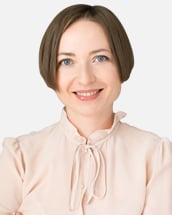The Swiss Federal Administrative Court classifies fertility tracker app as a Class IIb medical device
In brief
In its decision of 12 September 2022 (C-1256/2020), the Swiss Federal Administrative Court (FAC) confirmed that interpretive software that uses indicators such as calendar days and body temperature to monitor fertile and infertile phases of a menstrual cycle to achieve natural conception or prevent undesired pregnancy, qualifies as a medical device. This means that such software is subject to a conformity certification procedure with a notified body.
Contents
In its reasoning, the FAC primarily focused on the intended use of the software being for contraceptive purposes, i.e., “used for contraception” within the meaning of Rule 14 of Chapter III of Annex IX of the European Medical Device Directive (EU-MDD) (“Rule 14“), in force at the time of the disputed decision. Software in this category is now addressed in Rule 15 of Chapter III of Annex VIII of the European Medical Device Regulation 2017/745 (EU-MDR). The FAC made reference to the EU Medical Device Coordination Group (MDCG), which clarified in 2019 that software used for contraception is governed by Rule 15, leading to a classification in Class IIb. The FAC confirmed that through the reference in Article 15 of the Swiss Medical Device Ordinance (“MedDO“), the same applies in Switzerland, leading to an alignment of the classification of software used for contraception between Switzerland and the EU.
Background
On 26 May 2021 – the date on which the EU-MDR came into force – the revised MedDO entered into effect in Switzerland. The term “medical devices” is defined in Article 3 of MedDO and is aligned with the definition used in the EU-MDR. In brief, a device qualifies as a “medical device” if it is intended for a medical purpose. Medical devices are divided into (i) classical medical devices (e.g., plasters, dental implants, blood pressure monitors, pacemakers and potentially also apps) and (ii) in vitro diagnostic medical devices (e.g., pregnancy tests and urine tests).
Despite the fact that the MedDO and the EU-MDR mention “software” as a potential medical device and despite the existence of specific classification rules for software as a medical device, neither the MedDO nor the EU-MDR contain a definition of “software”. Therefore, reference is made to the MDCG, who defines “software” as “a set of instructions that processes input data and creates output data.”
Qualification
For software to qualify as medical device software under the MedDO, it must first fall under the definition of “software” (see above). When this is established, it is relevant whether the software in question is intended to be used for medical purposes. This can be the case if the software directly controls a (hardware) medical device (e.g., radiotherapy treatment software), if the software can provide immediate decision-triggering information (e.g., blood glucose meter software) or if the software can provide support for healthcare professionals (e.g., ECG interpretation software or software for a mobile application intended to monitor fertility, see below under Classification).
On the other hand, software used for managing patient data is generally not considered as medical device software, as it is intended to support administrative tasks only. Additionally, software that is intended for non-medical purposes such as invoicing and staff planning is not considered as medical device software.
When software qualifies as a medical device, the regulations and standards applicable to medical devices come into play. These are strict requirements with regard to product safety and the quality management of the organizations involved in their development, manufacture, distribution, sale and maintenance.
In an earlier landmark decision of 17 September 2018 (C-669/2016), the FAC already classified the app that is subject of the decision discussed herein as a medical device, as the app pursues a medical purpose in that it is aimed at planning conception or contraception.
Classification
According to the MedDO, in Switzerland medical devices are classified in accordance with the classification rules applicable in the EEA. Pursuant to Rule 15 of Chapter III of Annex VIII of the EU-MDR, all devices used for contraception, where non-invasive and for transient or short-term use, are classified as Class IIb medical devices. In cases where the devices are implantable or invasive for a long term, they are classified as Class III medical devices.
The FAC states in its reasoning that this provision covers all medical devices used to prevent pregnancy or facilitate conception, irrespective of the type of medical device or the method of contraception. Further, the FAC emphasizes that the intended purpose of the medical device (i.e., the control of conception) is the sole determinant of whether classification in Class IIb is justified. Therefore, if an app can be used for birth control, it should be classified in Class IIb. This implies that placing on the market requires certification by a conformity assessment body.
Swissmedic dismissed the application of Rule 14 in its former practice on the grounds that, unlike traditional contraceptive methods, (stand-alone) software cannot mechanically protect against pregnancy. This distinction led to a practice in which similar interpretive software (fertility tracker-apps) was generally classified as a method of birth control, i.e., Class I instead of Class IIb. With this new precedent, the FAC puts an end to this practice emphasizing that in line (and in conjunction) with said EEA-legislation, application of article 15 of the MedDO in the underlying case implies a IIb-classification when considering the intended use of the software.
***
Thank you to Chiara Bolter for her contribution to this alert.






